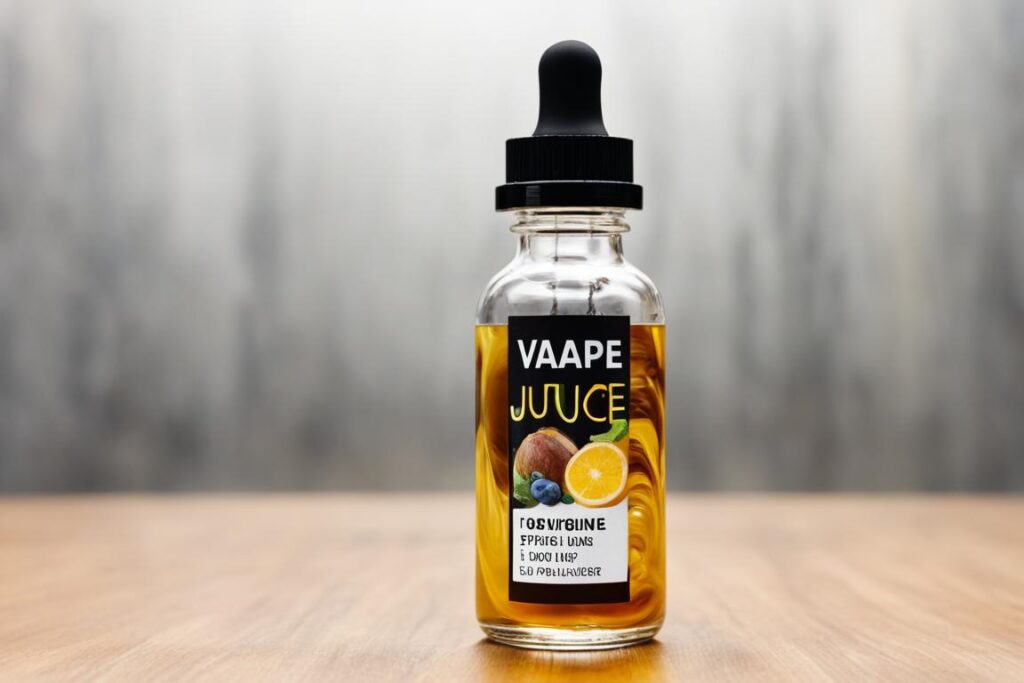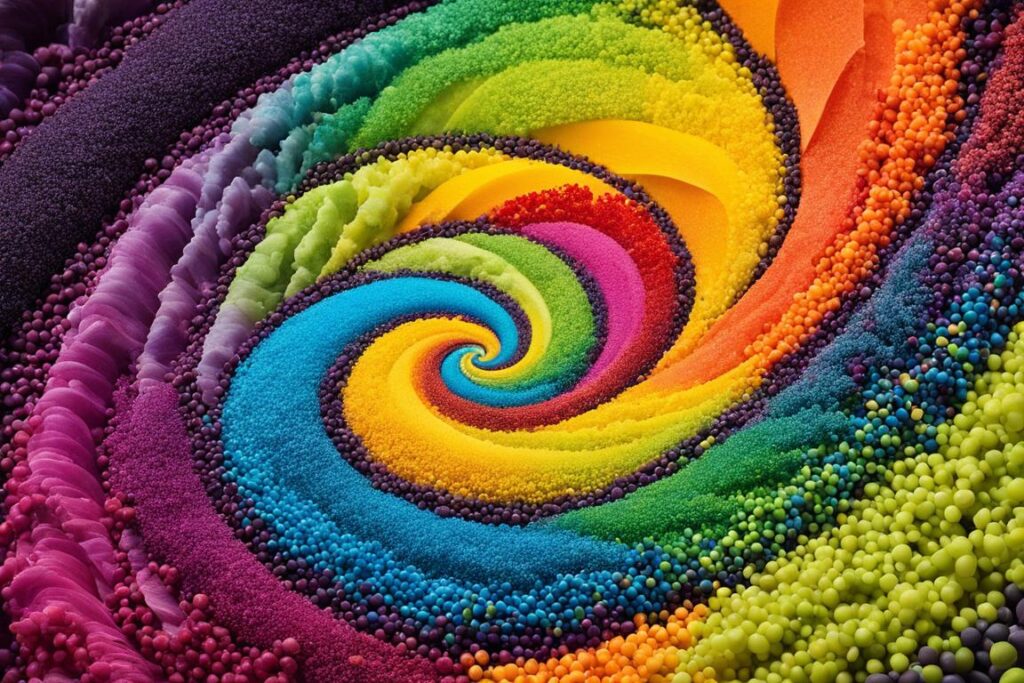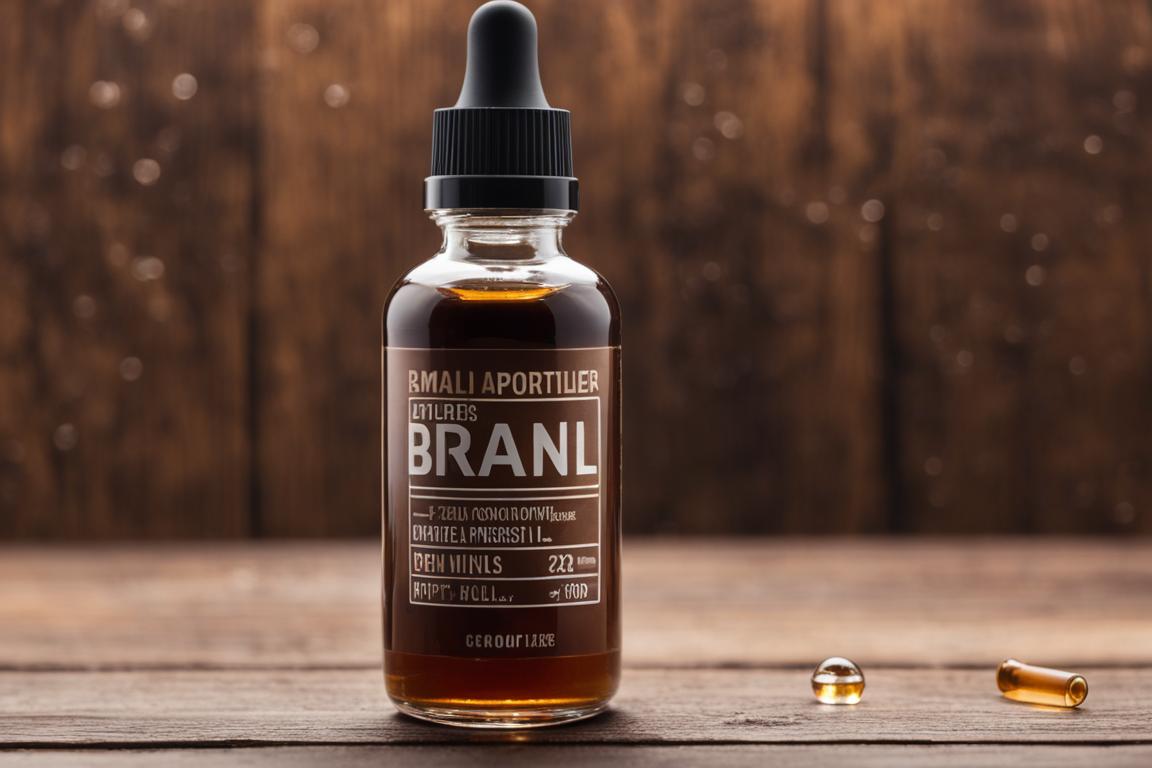Are you puzzled by the sudden discoloration of your vape juice? Don’t worry, you’re not alone. Many vapers have experienced their e-liquid turning brown, and it’s essential to understand why it happens. In this article, we’ll explore the factors that contribute to the color change in vape juice, including oxidation, nicotine, and flavoring ingredients. By unraveling the mystery behind the brown hue, you’ll gain a better understanding of how vaping works and ensure an optimal vaping experience.
Table of Contents
Toggle- Factors Affecting Vape Juice Color
- The Role of Oxidation in Vape Juice Color Change
- Impact of Nicotine on Vape Juice Color
- Influence of Flavoring Ingredients on Vape Juice Color
- Perception of Vape Juice Thickness and Steeping
- Conclusion
- FAQ
- Why does vape juice turn brown?
- What causes vape juice to change color?
- What is oxidation?
- How does nicotine contribute to the color change in vape juice?
- Do flavoring ingredients impact the color of vape juice?
- Does the color change affect the quality of vape juice?
- Can vape juice thickness be influenced by the color change?
- Is steeping vape juice necessary or beneficial?
- Related posts:
Key Takeaways:
- Oxidation, nicotine, and flavoring ingredients can cause vape juice discoloration.
- Exposure to air and light leads to oxidation and darkening of the e-liquid.
- The higher the nicotine concentration, the more pronounced the color change may be.
- Certain flavoring ingredients can also contribute to a more significant color change.
- The color change does not impact the quality or taste of the vape juice.
Factors Affecting Vape Juice Color
The color of vape juice can be influenced by various factors. Let’s take a closer look at the key elements that contribute to the color change of e-liquids.
Oxidation
Oxidation is one of the primary reasons for vape juice discoloration. When the e-liquid is exposed to air and light, it undergoes a chemical reaction that causes it to darken over time. This process is known as oxidation. The longer the vape juice is exposed to oxygen, the more noticeable the color change becomes.
Nicotine
The nicotine content in vape juice can also impact its color. E-liquids with higher nicotine concentrations tend to have a darker appearance compared to those with lower nicotine levels. The nicotine molecules can undergo oxidation, leading to a more pronounced color change over time.
Age and Flavoring Ingredients
The age of the e-liquid and the specific flavoring ingredients used can also affect its color. As vape juice ages, the color may darken due to oxidation and the breakdown of the flavoring compounds. Additionally, certain flavorings may naturally contribute to a more significant color change. For example, e-liquids with custard or dessert flavors tend to darken more noticeably compared to other flavors.
It’s important to note that while the color of vape juice may change over time, it does not necessarily indicate a decrease in quality or affect the overall vaping experience. The flavor and performance of the e-liquid should remain consistent as long as it is within its expiration date.
The Role of Oxidation in Vape Juice Color Change
Oxidation is a natural chemical process that occurs when a substance reacts with oxygen. When it comes to vape juice, oxidation plays a significant role in the color change of the e-liquid. Specifically, when nicotine-containing e-liquids are exposed to air and light, the nicotine molecules can react with the oxygen, resulting in a darkening of the vape juice.
This oxidation process is expected and accounted for by e-liquid manufacturers. They understand that when e-liquids are exposed to oxygen, the color change is a natural occurrence. The rate of oxidation can vary depending on factors such as the concentration of nicotine in the vape juice and the storage conditions.
To better understand the role of oxidation in vape juice color change, think of an apple slice turning brown when left exposed to air. The same principle applies to vape juice. Oxygen exposure can cause a chemical reaction that alters the color of the e-liquid over time.
To visually illustrate the importance of oxidation in vape juice color change, take a look at the image below:

Image illustrating the impact of oxidation on vape juice color change.
Impact of Nicotine on Vape Juice Color
Nicotine plays a significant role in the color change of vape juice. As the primary component of e-liquid, nicotine molecules can undergo oxidation over time, leading to a darkening of the liquid. The higher the concentration of nicotine in the vape juice, the more noticeable the color change may be.
However, it’s essential to note that the darkening of vape juice due to nicotine oxidation does not affect its quality or taste. This process occurs gradually and is a natural occurrence in e-liquids.
The Slow Oxidation Process
Nicotine oxidation is a slow process that takes place over an extended period. When exposed to air and light, the nicotine molecules react with the oxygen, causing the vape juice to darken. This process occurs naturally and is not a cause for concern.
Remember, the color change due to nicotine oxidation is purely aesthetic and does not impact your vaping experience or the effectiveness of the vape juice.
To illustrate the impact of nicotine on vape juice color, refer to the table below:
| Nicotine Concentration | Color Change |
|---|---|
| 0mg | No significant color change |
| 3mg-6mg | Slight darkening |
| 12mg-18mg | Moderate darkening |
| 24mg and above | Noticeable darkening |
As shown in the table, higher nicotine concentrations tend to result in more pronounced color changes in vape juice.
By understanding the impact of nicotine on the color of vape juice, you can appreciate that this color change is a natural occurrence and does not affect its overall quality or taste.
Influence of Flavoring Ingredients on Vape Juice Color
When it comes to the color change in vape juice, the specific flavoring ingredients used play a significant role. Certain flavors, such as custard or dessert flavors, have a higher tendency to darken due to the presence of specific flavoring compounds. The interaction between these flavoring ingredients and the nicotine molecules in the e-liquid can contribute to a more pronounced color change.
It’s important to note that while the color change may occur, it does not indicate a decrease in the quality of the vape juice. The flavor degradation that may occur alongside the color change is a natural process and doesn’t affect the overall vaping experience.
Example Flavoring Ingredients and Their Impact on Vape Juice Color:
| Flavor | Flavoring Ingredients | Potential Color Change |
|---|---|---|
| Fruit | Natural or artificial fruit extracts | Minimal to no significant color change |
| Custard or Dessert | Vanilla, cream, caramel, or other dessert flavors | More significant darkening due to specific flavoring compounds |
| Mint or Menthol | Mint or menthol extracts | Minimal to no significant color change |
As seen in the example table above, different flavor profiles can have varying degrees of impact on the color change of vape juice. However, it’s important to remember that this color change is a natural occurrence and does not affect the quality or taste of the e-liquid.
“The flavoring ingredients used in vape juice can add complexity to the taste and aroma, but they may also contribute to a more noticeable color change. However, rest assured that this is a normal part of the vaping experience and does not affect the overall enjoyment of your favorite flavors.”

Perception of Vape Juice Thickness and Steeping
The perception of vape juice thickness can be influenced by the color change. Darker-colored e-liquids may appear thicker, while lighter-colored ones may seem more watery. However, the actual thickness of the e-liquid remains the same regardless of the color change.
Some vapers prefer e-liquids that have been steeped or aged, as they believe it enhances the flavor. However, the effectiveness of steeping in terms of flavor improvement is a matter of personal preference and not supported by scientific evidence.
Steeping involves allowing the vape juice to sit and mature over time, allowing the flavors to blend and intensify. It is believed that this process can enhance the overall flavor perception of the e-liquid. However, it’s important to note that not all vape juices require steeping, and the impact on flavor can vary depending on the specific e-liquid and individual taste preferences.
Ultimately, vape juice thickness and steeping are subjective experiences that differ from person to person. Some vapers may prefer thicker e-liquids, while others may enjoy the flavor nuances that come with steeping. It’s important to experiment and find what works best for you and your vaping experience.
Conclusion
The color change in vape juice is a common occurrence and is primarily attributed to oxidation, nicotine oxidation, and the interaction between flavoring ingredients and nicotine molecules. These factors can cause the e-liquid to darken over time, but it does not indicate a deterioration in quality or taste. Despite the change in color, the flavor remains intact as long as the vape juice is within its expiration date.
The thickness of the e-liquid may be subjectively perceived based on its color. Darker-colored e-liquids may appear thicker, while lighter-colored ones may seem more watery. However, the actual thickness of the e-liquid remains the same regardless of the color change.
Some vapers prefer steeped or aged e-liquids, believing that it enhances the flavor. However, the effectiveness of steeping in improving flavor is subjective and not scientifically proven. It ultimately comes down to personal preference.
To maintain the quality of your vape juice, it is essential to store it properly and use it within its expiration date. This will ensure the best vaping experience and prevent any potential degradation of flavor or quality.
FAQ
Why does vape juice turn brown?
Vape juice can turn brown due to oxidation, nicotine oxidation, and the interaction between flavoring ingredients and nicotine molecules.
What causes vape juice to change color?
The color change in vape juice can be influenced by factors such as oxidation, nicotine content, age, and specific flavoring ingredients.
What is oxidation?
Oxidation is a chemical process that occurs when a substance reacts with oxygen. In the case of vape juice, oxidation can cause the e-liquid to change color.
How does nicotine contribute to the color change in vape juice?
The nicotine molecules in vape juice can undergo oxidation over time, resulting in a darker appearance. Higher nicotine concentrations can lead to a more pronounced color change.
Do flavoring ingredients impact the color of vape juice?
Yes, certain flavors, such as custard or dessert flavors, may darken more significantly due to the presence of specific flavoring compounds and their interaction with nicotine molecules.
Does the color change affect the quality of vape juice?
No, the color change in vape juice does not indicate a decrease in quality or taste. As long as the e-liquid is within its expiration date, its quality and flavor should remain the same.
Can vape juice thickness be influenced by the color change?
The perception of vape juice thickness can be influenced by the color change. Darker e-liquids may appear thicker, while lighter ones may seem more watery. However, the actual thickness remains the same.
Is steeping vape juice necessary or beneficial?
Steeping, or aging, vape juice is a matter of personal preference. Some vapers believe it enhances the flavor, but it is not supported by scientific evidence.

